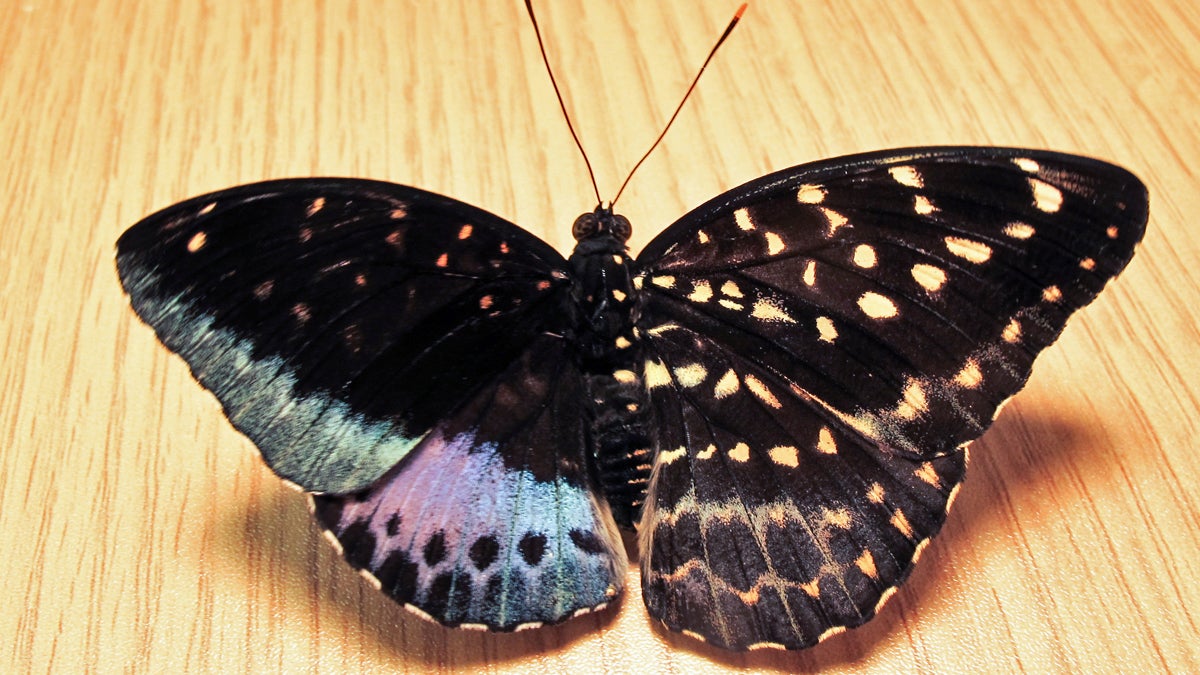Rare half-male, half-female butterfly discovered at Philly museum

The right wings of this live Lexias pardais are characteristic of the female of the species, and the left wings are typical of the male. The body’s coloration is exactly split down the middle lengthwise. (Image courtesy of Isa Betancourt/Academy of Natural Sciences Philadelphia)
A longtime volunteer at the Academy of Natural Sciences discovered an extremely rare specimen on his morning rounds at the live butterfly exhibit in October.
Chris Johnson found it when he was removing butterflies from the chamber where they first emerge from their chrysalises.
“There was one butterfly that just opened up, and it was a total surprise,” said Johnson, a retired Swarthmore engineer.
When the butterfly unfolded its wings, Johnson saw that it was half male and half female, split right down the middle of the body.
The right, female side of the butterfly is brown with yellow spots. The left, male side is slightly smaller, black with iridescent blue, purple and green colorings.
“It just gave me goosebumps, it was a total surprise, something I never expected to see,” Johnson said.
The butterfly likely had an extremely rare condition called bilateral gynandromorphy. It occurs when there is a problem with the very first cell division when an insect is forming, right after an egg is fertilized, resulting in female chromosomes in one daughter cell and male in the other.
In bilateral gynandromorphy, the cells and reproductive organs on one side of the body are all male, and on the other side, all female.
The condition occurs in insects and some vertebrates, and is most frequently noticed in butterfly and bird species that have very different marking and color patterns for males and females.
During his 20-year tenure at the academy, lepidopterist and entomology collection manager Jason Weintraub said this is the first butterfly gynandromorph he has seen there.
“It’s exciting to see because you read about it, and you see specimens in collections, but when you actually see one alive in front of your eyes, it’s kind of spectacular,” Weintraub said.
The specimen came to the academy in a shipment of pupae from a butterfly farm in Malaysia.
It was killed and preserved for research for fear of it being damaged during its short life in the live butterfly exhibit.
“(It was sad) for me personally because I spend a day each week with the butterflies,” Johnson said. “My reaction, first, was that I was sorry, but I understood.”
The preserved butterfly will be on display at the Academy of Natural Sciences for about a month starting Jan. 17, along with a half-male, half-female oriole.
WHYY is your source for fact-based, in-depth journalism and information. As a nonprofit organization, we rely on financial support from readers like you. Please give today.

